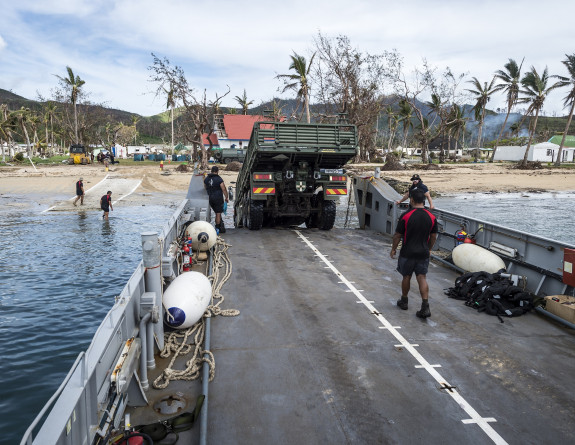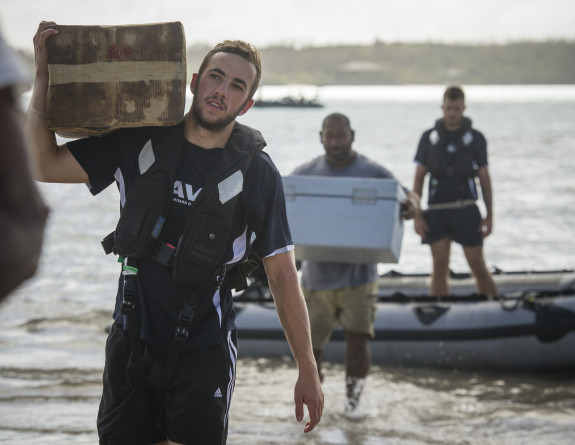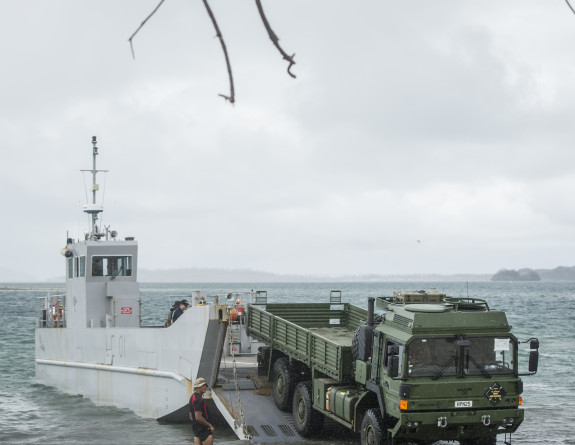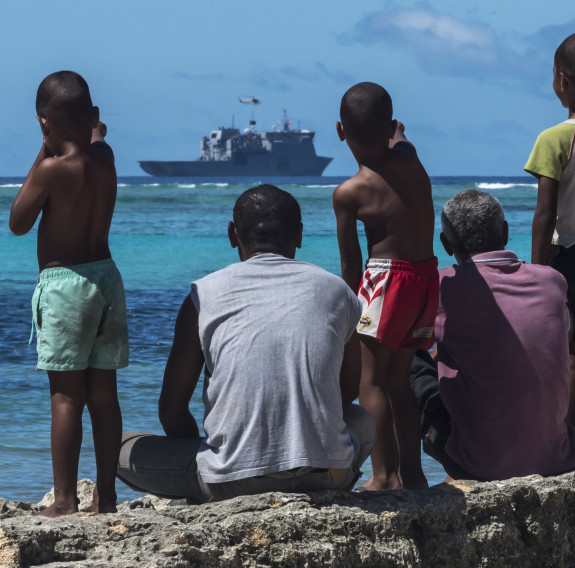Fiji
When Winston blew into town
When Cyclone Winston hits Fiji on 20 February 2016, at the time it is the strongest cyclone ever to have hit the South Pacific. It leaves a trail of destruction, particularly in the northern outlying islands. Dozens lose their lives, whole villages are destroyed, homes and crops damaged, power lines cut and more than 8,100 people need shelter.
21 February 2016
The Air Force are able to respond rapidly with reconnaissance flights, and by airlifting emergency relief. However, a disaster operation on this scale needs the ships of the Royal New Zealand Navy to provide the bulk of the recovery. New Zealand’s early response helps the Fijian Government to quickly ascertain the scale of destruction and galvanise support from foreign donors.
I saw the raw effects of what Winston had done. No leaves left on trees, and the villagers just stood there naked. An Island that was now brown and had lost all its leaves, no roofs on houses. The wharf was destroyed.
OCSS Victor Grimshaw, HMNZS Canterbury
28 February 2016
A week after the cyclone, Offshore Patrol Vessel HMNZS Wellington arrives with 60 tonnes of aid supplies and 71 military personnel. Her early arrival means she can identify route and anchorage locations for the larger logistics and supply vessel, HMNZS Canterbury, which is en route.
3 March 2016
Canterbury arrives with 106 tonnes of essential supplies, including building and construction materials, water tanks and medical supplies. On board are 300 personnel, three helicopters and medical and engineering personnel.
The ship becomes the maritime base for recovery operations in the northern outer islands, while the NH90s, on their first operational deployment overseas, help deliver aid to the northern islands and remote communities. Not content with one delivery, Canterbury return to Suva to fill her cargo holds with more recovery supplies for the Northern Islands of Fiji.
Canterbury, in its multi-role logistics capability, uses landing craft to transport materials from the ship’s cargo hold to the shorelines of remote islands. Helicopter operations from the ship’s flight deck adds to the loads of equipment being delivered ashore, including Army personnel who go on to effect repairs and help with rebuilding.



Canterbuy's landing craft is used to transport materials from the ship’s cargo hold to the shorelines of remote islands.
17 April 2016
After a month and a half of supporting relief and recovery operations, HMNZS Canterbury prepares to leave Fiji. New Zealand’s focus now turns to the long-term reconstruction effort to rebuild schools, evacuation centres and medical facilities on Vanua Balavu and elsewhere in Fiji.
In all, close to 500 combat engineers, soldiers, and aircrew are deployed, making it one of the NZDF’s largest peacetime deployments to the Pacific.
In addition to the immediate relief provided to Fijian people and communities, the deployment demonstrates NZDF's commitment to supporting Pacific nations and in particular the benefits of being able to work in partnership with our friends in the Fijian military forces.
